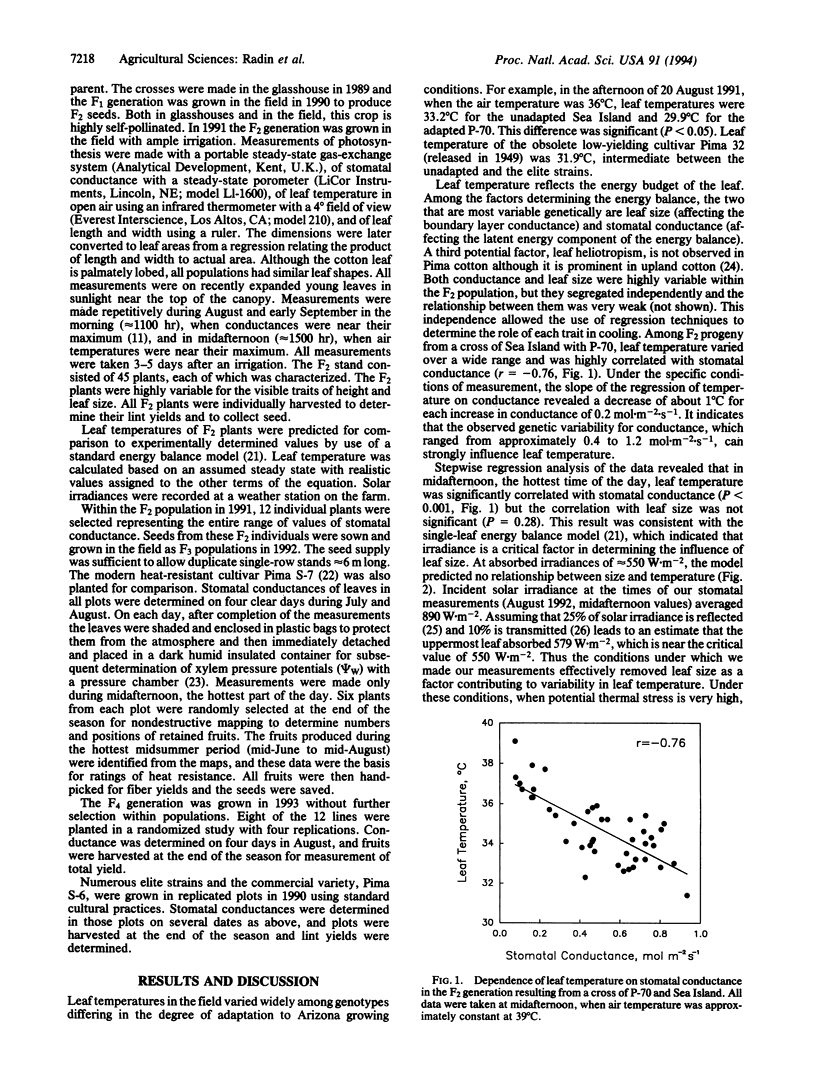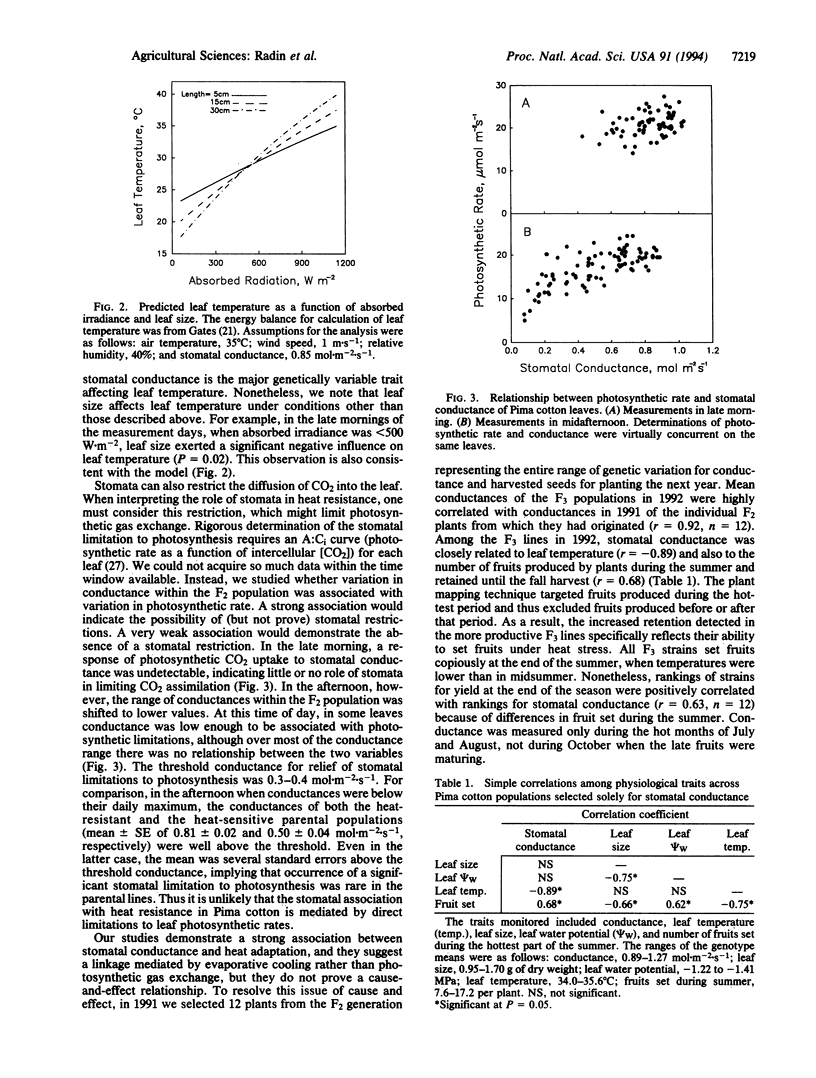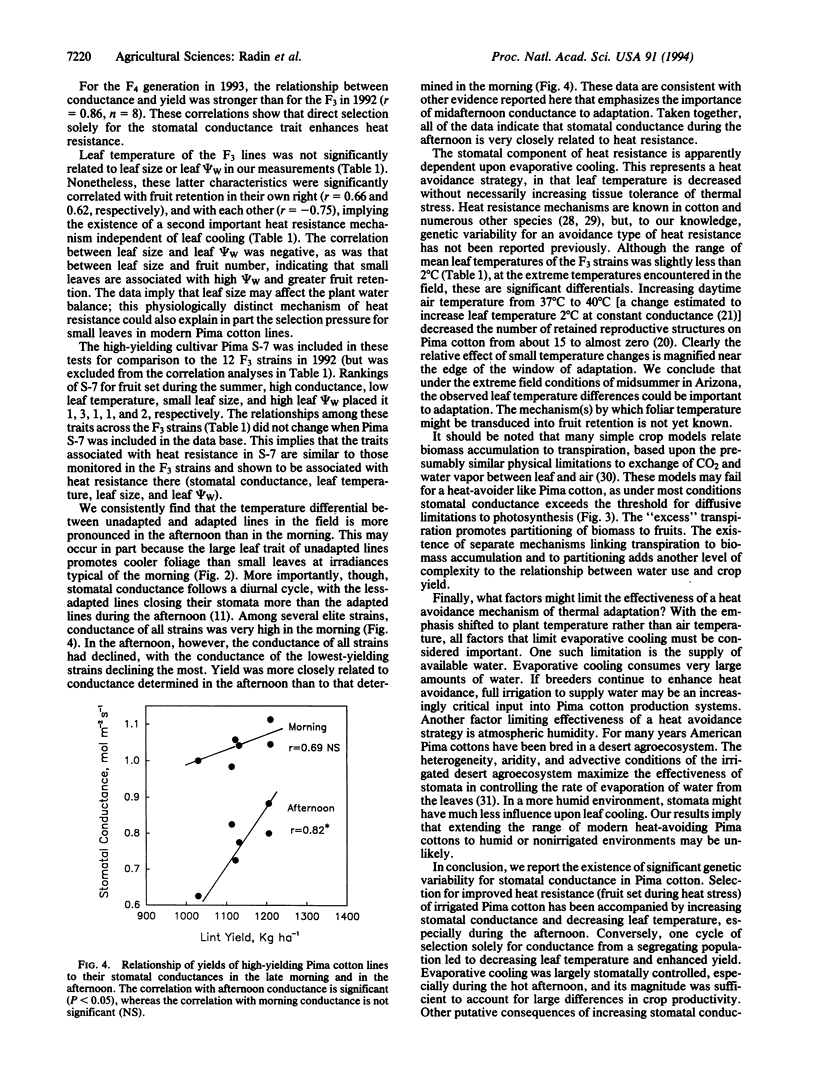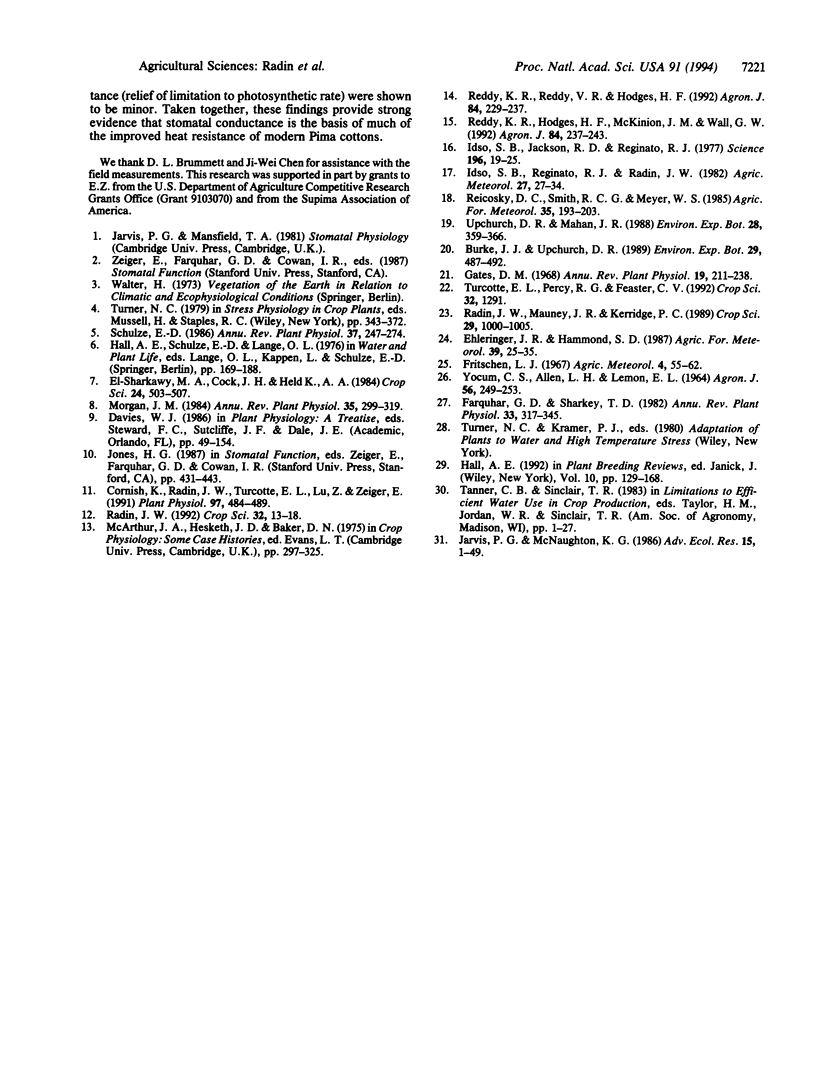Abstract
Responses of stomata to environment have been intensively studied, but little is known of genetic effects on stomatal conductance or their consequences. In Pima cotton (Gossypium barbadense L.), a crop that is bred for irrigated production in very hot environments, stomatal conductance varies genetically over a wide range and has increased with each release of new higher-yielding cultivars. A cross between heat-adapted (high-yielding) and unadapted genotypes produced F2 progeny cosegregating for stomatal conductance and leaf temperature. Within segregating populations in the field, conductance was negatively correlated with foliar temperature because of evaporative cooling. Plants were selected from the F2 generation specifically and solely for differing stomatal conductance. Among F3 and F4 populations derived from these selections, conductance and leaf cooling were significantly correlated with fruiting prolificacy during the hottest period of the year and with yield. Conductance was not associated with other factors that might have affected yield potential (single-leaf photosynthetic rate, leaf water potential). As breeders have increased the yield of this crop, genetic variability for conductance has allowed inadvertent selection for "heat avoidance" (evaporative cooling) in a hot environment.
Full text
PDF




Selected References
These references are in PubMed. This may not be the complete list of references from this article.
- Cornish K., Radin J. W., Turcotte E. L., Lu Z., Zeiger E. Enhanced Photosynthesis and Stomatal Conductance of Pima Cotton (Gossypium barbadense L.) Bred for Increased Yield. Plant Physiol. 1991 Oct;97(2):484–489. doi: 10.1104/pp.97.2.484. [DOI] [PMC free article] [PubMed] [Google Scholar]
- Idso S. B., Jackson R. D., Reginato R. J. Remote-sensing of crop yields. Science. 1977 Apr 1;196(4285):19–25. doi: 10.1126/science.196.4285.19. [DOI] [PubMed] [Google Scholar]


